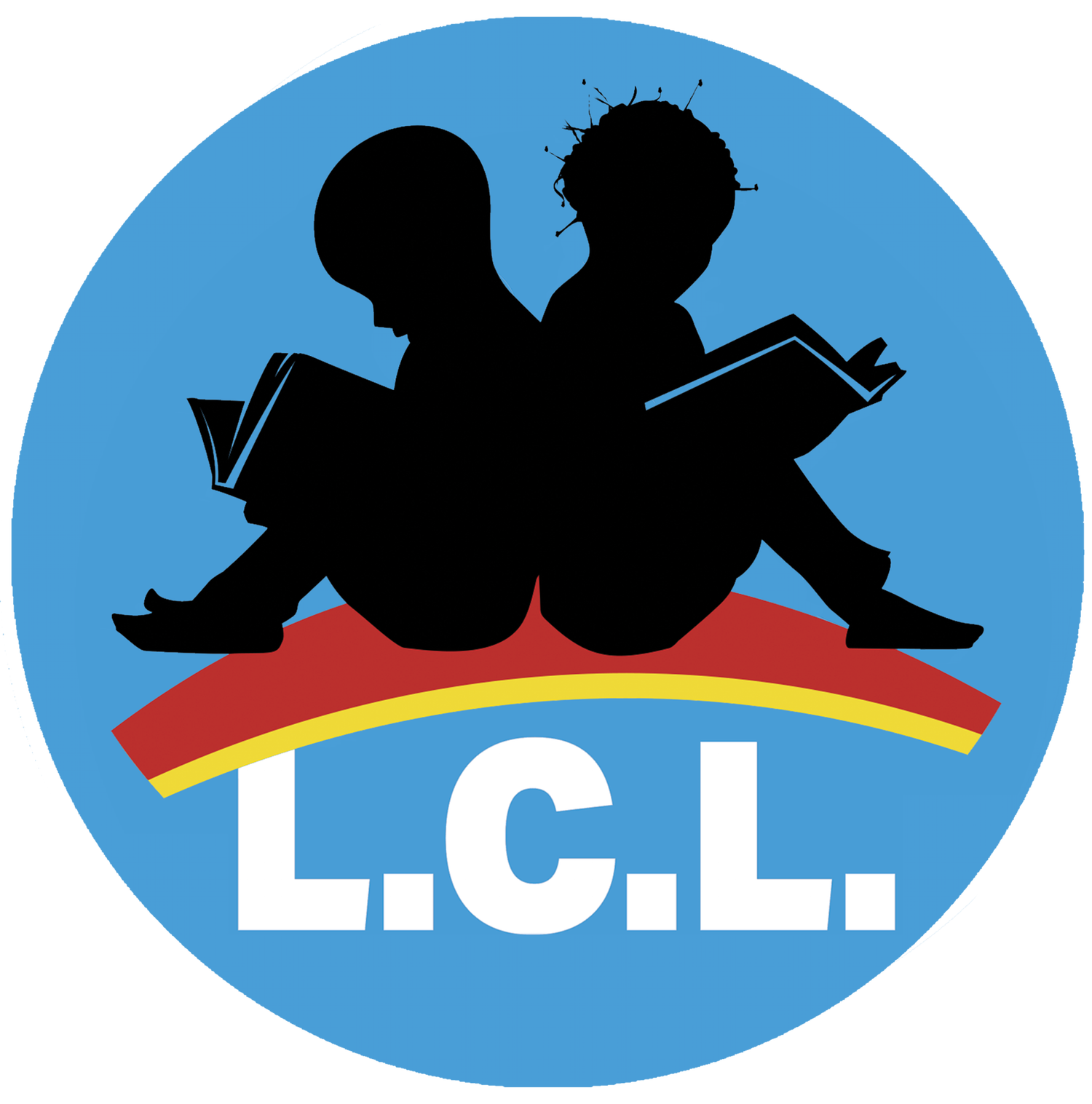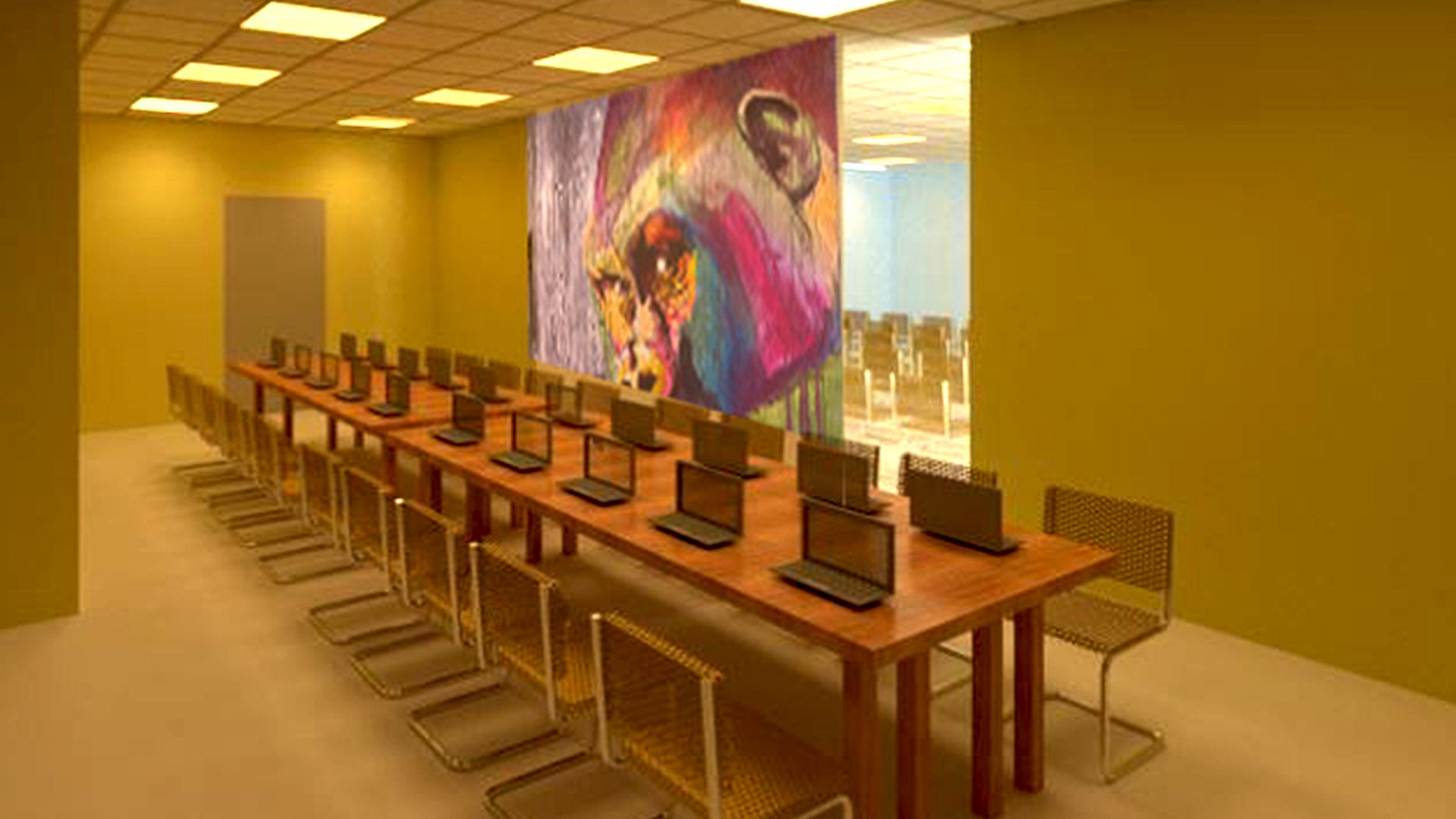THE FOUR PILLARS OF THE LCL
LITERACY: Promote early Literacy Development by cultivating reading habits from an early age and engaging in age-appropriate programs that instill a love for books and storytelling while also creating and supporting literacy activities and programs tailored to diverse age groups, ensuring that learning opportunities are accessible to everyone in the community.
ENGLISH: Teach beginning, intermediate, and advanced English, English grammar, writing, and vocabulary. Prioritize the importance of learning English through the honoring and use of our local languages to teach English. Empower young girls to become professionally competitive through English learning and computer literacy skills.
PROMOTE MENTAL HEALTH AND WELLNESS: In a region traumatized by chronic conflict and poverty, prioritize mental health and emotional well-being by offering programs, resources, and a nurturing environment that supports the mental and emotional growth of our community members.
BASIC TECHNOLOGY AND DIGITAL LITERACY: Facilitate the development of information and computer literacy skills while supporting both individual and self-conducted education, as well as formal education, at all levels.
OPERATIONAL PLAN
The LCL will incorporate a state-of-the-art technology center, a traditional lending library, screening and community room, and learning garden. It will be open to the youth of Goma and its surrounding villages. We estimate some 25,000 youth from the 35 primary and secondary schools in the surrounding “quartiers” will be able to benefit from programs at the LCL. There will be a modest, one-time fee for “membership.” Adults may use the LCL only at specific, established times—when children are not present—and must pay a small fee each time. Children, especially young children, will be encouraged to make use of the lending library.
While there is not a tradition of book lending in eastern DRC, the lending library model will teach youth about borrowing and respecting the property of others, while introducing them to the fascinating world of books and reading. Children will be allowed to borrow a book to take home, signing it out with their membership card and receiving a due date, as they would at any library. They will be encouraged to read their book while at the LCL and to seek out help when needed. Their progress will be monitored and they will be placed in literacy courses provided by the LCL at their appropriate reading level. To be clear, the LCL is not seeking to replace the traditional school, however it will seek to greatly enhance the overall literacy competence of every child that enters its doors.
In addition, all children and adults will be asked to wash their hands at one of the sanitation stations before entering the LCL. This will encourage a healthy respect for the treatment and care of the books and technology at the LCL while also increasing community hygiene, as hand-washing is proven to decrease the risk of infection and prevent the spread of illness.
Fidel and his staff will teach basic technology, literacy, and English courses while offering a variety of enrichment programs including, but not limited to: graphic design, writing, poetry, high-yield gardening, computer programming, coding, video production, video editing, art, and performance. It should be noted that many people in the U.S. have enthusiastically expressed an interest in travelling to Goma to volunteer at the LCL. A curriculum for “visiting” teachers is currently being developed. These volunteers will be formally vetted and trained before they visit the LCL in Goma. In addition, a program will be established to bring young “graduates” of the LCL to the U.S. for specialized training so they may return to Goma and work as full-time LCL staff and in their community.
All children will be encouraged to learn English. While technology and literacy courses, and many other programs, will be in their native Swahili or French, it is believed that by learning to read, write, and speak effectively in English, the youth will greatly broaden their opportunities. Fidel, a trained and experienced English teacher, will be in charge of the English literacy program at the LCL which will include classes in beginning, intermediate, and advanced English, English grammar and writing, and English vocabulary. These classes will be available to youth ages 6-20 and will make use of the books in the lending library and the English language curriculum in the Technology Center.
Some of the other fascinating components to the LCL’s educational programs will include online library subscriptions to the collections in the U.S. Library of Congress and the Sorbonne, allowing Congolese children to have at their fingertips the greatest literature in the world. The LCL will also deliver a proven program from the American University of Nigeria that teaches young people how to get hi-yield harvests from small plots of land. Our “Learning Garden” will offer valuable knowledge to children who can immediately implement these new ideas at home. A youth-run radio show (radio is still king in eastern DRC) would allow the area’s kids to cultivate their critical thinking while getting the word out about the LCL and their approach to enhanced learning and technology over the airwaves of North Kivu.
There is already incredible enthusiasm from folks living near the LCL site. It cannot be understated how important the excitement, participation, and appreciation of the project by local residents is to the success of the LCL, from a community enrichment standpoint and also for the long-term security of the project itself. The LCL will immediately become the centerpiece of the community and it will be incumbent upon the project organizers to foster partnerships with the community at every opportunity. Inviting community leaders and special guests to community events at the LCL will help establish the new center as a vital community resource, one worth defending by local residents. Indeed, given the endemic insecurity of the region, creating a beacon of hope for the area’s children will give the people of Goma a beloved cause to fiercely protect.
Local artists have volunteered to create folk art on the exterior and interior walls, while several prominent businessmen have pledged their support. Community members and other organizations in the area will take note of this, and all of these allies will serve to garner additional support for the LCL within Goma and across the international community.
FACILITY DESCRIPTION
The LCL will be a large, single-story, well-ventilated building sitting atop a terraced knoll. It will be a concrete structure supporting a single slanted roof, creating a large, airy spaces beneath the roof. The building has been designed by engineers, architects, and designers with extensive experience in developing sustainable and low-cost educational spaces in Africa. The final design features a welcoming and enhanced learning environment offering an array of hi-tech facilities and programs aimed at inspiring Goma’s underserved and undereducated youth to value literacy, community building, and critical thinking. It is located in the community of Bulengo, the fastest growing suburb of Goma, within two kilometers of the new soccer stadium and two new universities.
The physical space will be comprised of a large entry foyer and open plan main space (the reading room), two rooms containing the lending library books, two offices, janitorial and technology closets, a room containing the technology center, two classrooms, a screening room, and a café.
The foyer opens onto the main space, the reading room, a bright and open environment with tables and chairs. This is a multi-purpose space, and can be used for events, large classes, or meetings. Off the reading room is the lending library, an L-shaped area with bookshelves containing thousands of books for all ages, and in many languages. Windows look into the reading room from the Lending Library, enhancing the open, airy effect while creating a safe and secure space for the children. Also situated off the main space are two offices, a janitorial closet, and the electrical/technology closet.
Off the entry foyer in the opposite direction, through a set of wide doors, is the technology center, the heartbeat of the LCL. The technology center is another large open space beneath the roof. Smaller than the main reading room, the technology center will also have tables and chairs and will showcase the LCL’s commitment to cutting edge education and literacy by featuring the latest in educational technology. Off this room will be two classrooms, each accommodating 6-10 students and their instructor. A large sliding door featuring a striking mural by a local artist forms part of the back wall of the Technology Center. Sliding the mural/door open allows access to the 100-seat, state-of-the-art Screening Room. The Screening Room can also be used for lectures, poetry slams, community gatherings, and musical events.
Behind a partition in the entry foyer are double doors that access the café. The café opens onto a covered, outdoor terrace with tables and chairs. While they can be accessed from the reading room, the sanitation stations are just off the terrace. They include separate boy’s and girl’s bathrooms and handwashing stations. The entire building, including some of the interior spaces, will be a canvas for local artists to convey imagery dear to the region. Murals will include images of Patrice Lumumba, the first democratically-elected president of the DRC and the LCL’s namesake; the iconic animals of the region: okapi, elephant, and mountain gorilla; the volcanic peaks around Goma; and the stunning fauna; all in a pleasing and uplifting color palette.
The LCL will be open daily, and some evenings, and the facility will be wholly self-sufficient, generating its own solar power while pumping water from the nearby lake into a filtration system. The entire parcel of land will be enclosed by a security wall made of the ubiquitous black Goma lava. There will be two iron gates allowing for vehicle and pedestrian access, three secure parking spaces available for staff only, security ramparts or towers, and a single outbuilding (another shipping container) for security staff lodgings and storage. The remaining grounds will be used as a learning garden and play area.
SUSTAINABILITY, RISKS, AND NEGATIVE IMPACT AVOIDANCE
To ensure the sustainability of the project, we are working closely with local government authorities and are seeking the participation of many Goma residents. A number of local schools, universities, social institutions, and think-tanks have already signaled their desire to take an active part in the process of seeing the LCL become a reality.
Local volunteers from nearby universities and civic institutions such as Maison des Jeunes, Yolé Africa, and LUCHA, as well as local sports teams such as Promo Jeune Basket, and PJB will assist us in running the library on a daily basis. To ensure financial sustainability of the project, we will seek donations from international donors and foundations, and Congolese financial institutions and corporations. There are excellent opportunities in the United States for financial assistance for projects that assist underserved youth around the world. Accordingly, funds would be raised annually for maintenance, security, library staff, and ongoing book and technology acquisitions. In addition, we will ask for a modest membership fee of $2 per year, per child.
Eastern DRC remains a volatile region for agencies to operate in, with high rates of crime, poor infrastructural networks and a very high illiteracy rate. While this may present risks to the implementation of the project, the organization will seek the cooperation of local authorities, hire responsible security, and access to the library will always be granted without fervor to persons of any political party, and to any and all ethnic and religious persuasions.
Facility Development teams







